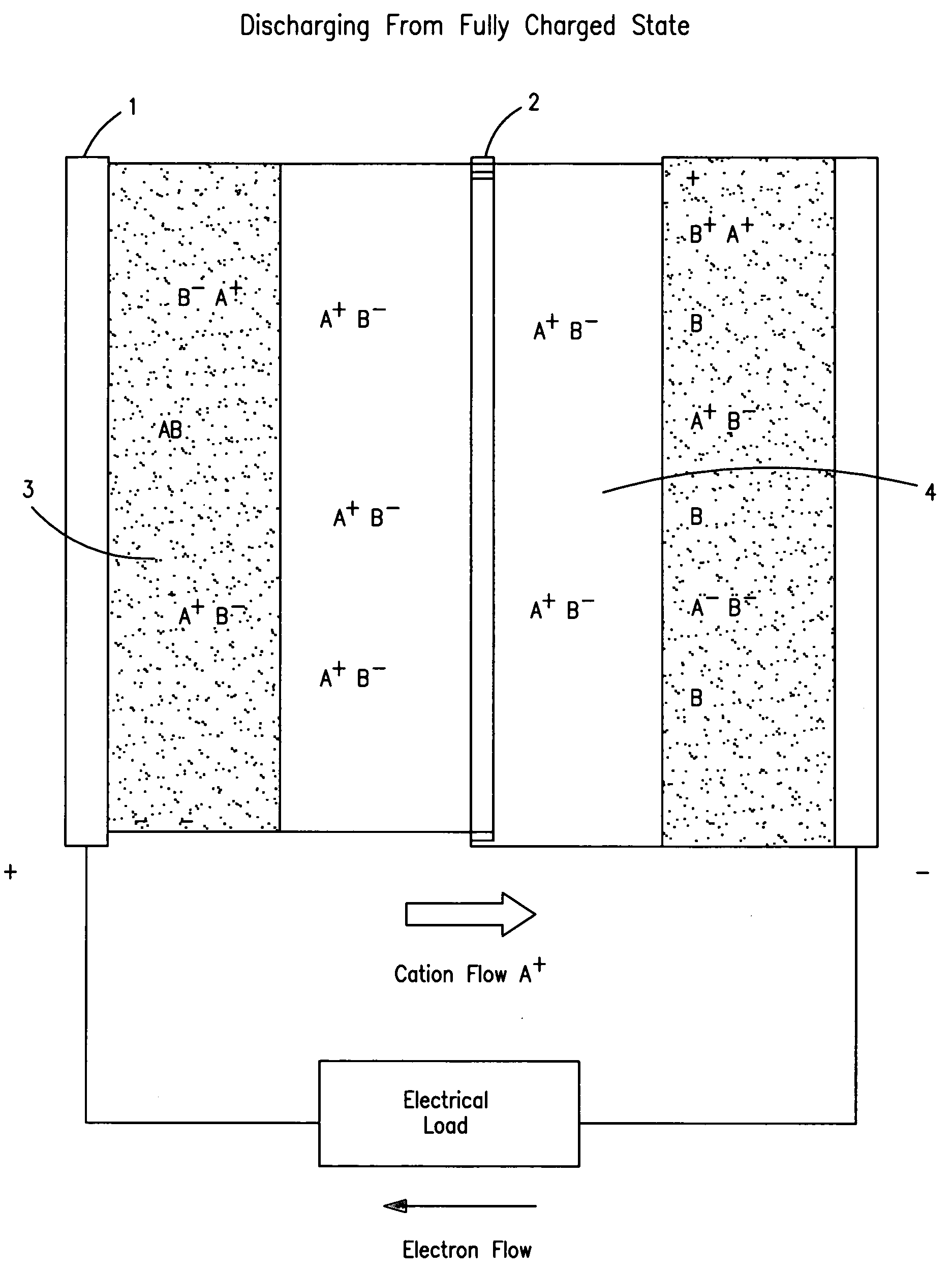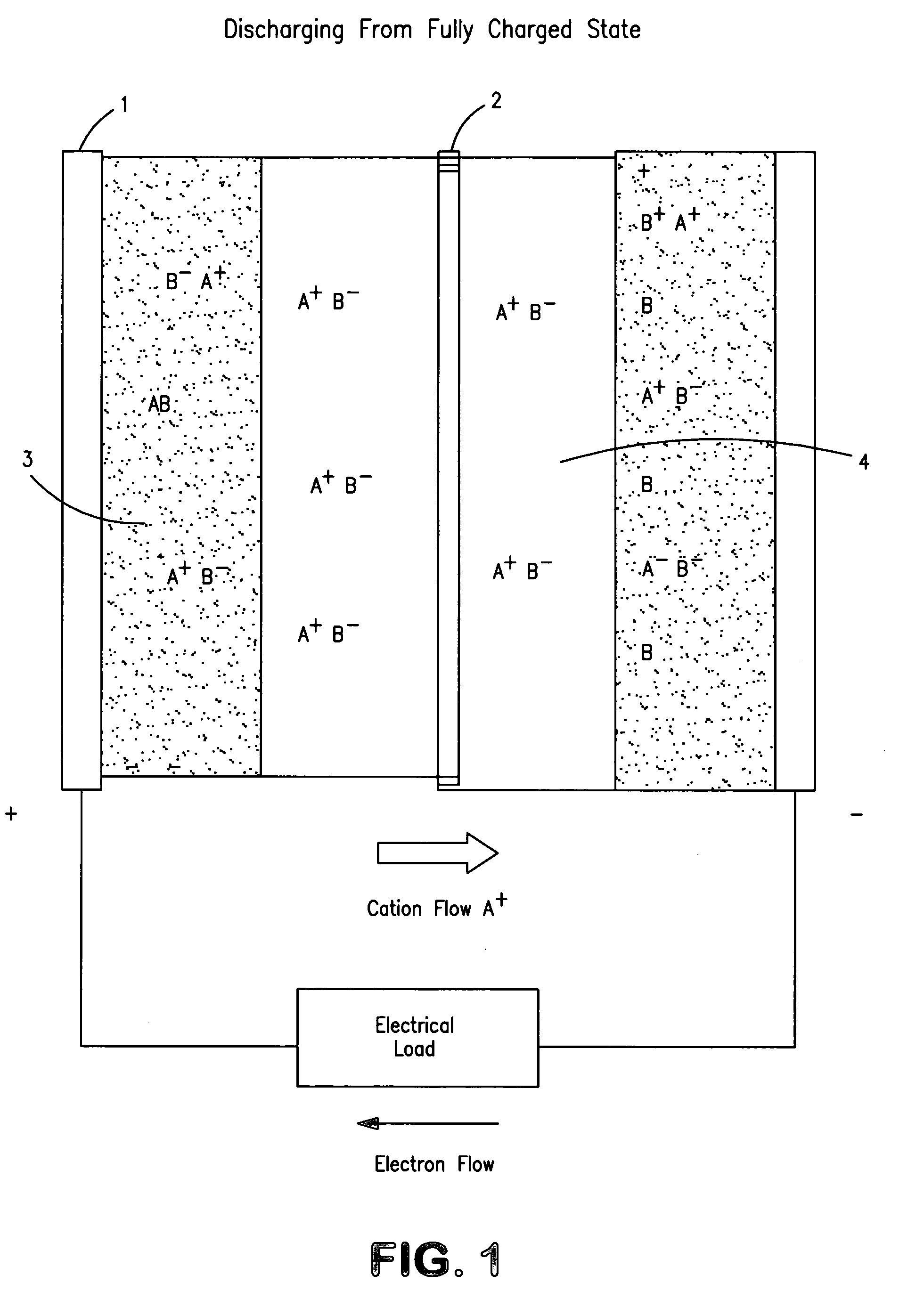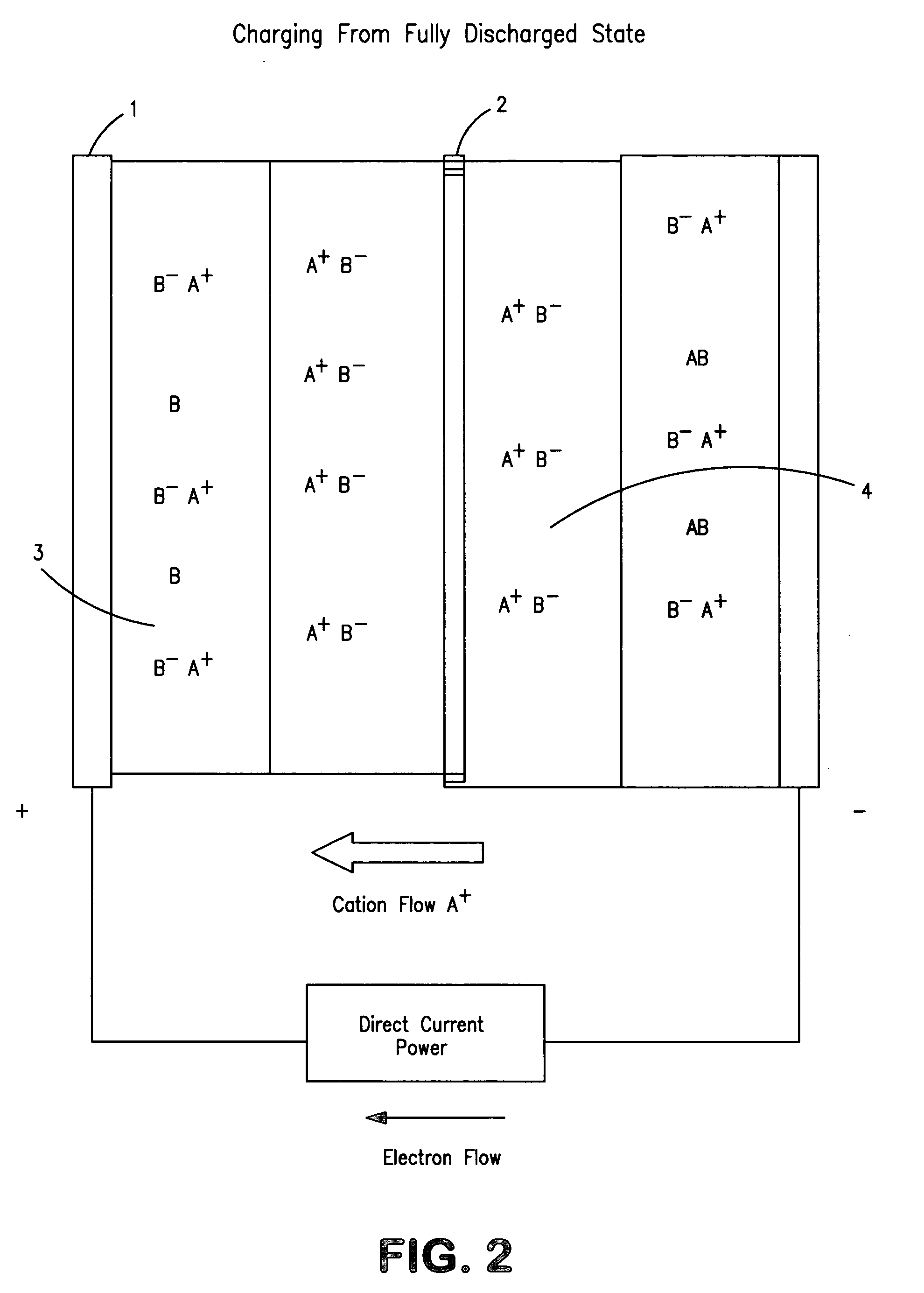Concentration cell energy storage device
a technology of energy storage device and concentration cell, which is applied in the field of electrochemical energy storage and delivery device, can solve the problems of deterioration of electrodes or other internal cell components, insufficiently, etc., and achieve the effects of long service life, easy ionization and reduction or oxidation, and reliable performan
- Summary
- Abstract
- Description
- Claims
- Application Information
AI Technical Summary
Benefits of technology
Problems solved by technology
Method used
Image
Examples
example-1
[0120]Empirical performance data for the sulfide and iron cells are given in the following figurers.
[0121]FIG. 6 describes a few of a series of over 1,000 cycles put onto a sulfide cell with electrode area of 4 square inches and spacing of 0.20 inches on either side of a Sybron cation membrane. The reagents are stored at the electrode sites consisting of coconut, UU grade charcoal, loosely compacted between the electrodes and membrane. Reproducibility and consistency of cycling is noted. Active flat area of membrane and electrodes is 4 in2.
example-2
[0122]FIG. 7 shows two cycles for an iron concentration cell employing carbon felt pads mechanically laying against each of the two electrodes. A plastic (honeycomb structure) screen is between the felt pads on both sides to permit introduction of electrolyte in to cell after assembly. A sheet of RAI. Co. homogeneous polyethylene cation transport membrane referenced as ESC type. Electrode plate area is about 5 in2. The cycles, over 1200, are almost indistinguishable from each other in performance, and with no observable degradation.
[0123]FIG. 8 shows the continued cycling of the same cell-B to indicate the cycle reproducibility of electrical data. These last four cycles represent over 1,00 total energy events for that cell when discharging at constant resistive load.
example-3
[0124]More experimental data with sulfide cells are presented in the next graph. A cell is constructed, FIG. 9, employing Sybron (cation) membrane as separator principally to eliminate any electronic contact between charcoal particles on opposite electrodes. This cell has a flat electrode area of about 10 in2 and electrode plate separation of 0.5 in. The figure shows charge-discharge electrical characteristics while maintaining constant resistive load during discharge. The total (x-axis length) time for the cycling as shown in the graph is 25 hours. The reproducibility of characteristics from one cycle to the next is again demonstrated.
[0125]Details of Cell Fabrication
[0126]Construction of concentration cells is very similar to that of many electrochemical devices. In principle they consist of two electrodes, an internally intervening electrolyte and a physical separator that permits transport of ions for electrical conduction while presenting maximally obstructing flow or mixing of...
PUM
 Login to View More
Login to View More Abstract
Description
Claims
Application Information
 Login to View More
Login to View More - R&D
- Intellectual Property
- Life Sciences
- Materials
- Tech Scout
- Unparalleled Data Quality
- Higher Quality Content
- 60% Fewer Hallucinations
Browse by: Latest US Patents, China's latest patents, Technical Efficacy Thesaurus, Application Domain, Technology Topic, Popular Technical Reports.
© 2025 PatSnap. All rights reserved.Legal|Privacy policy|Modern Slavery Act Transparency Statement|Sitemap|About US| Contact US: help@patsnap.com



